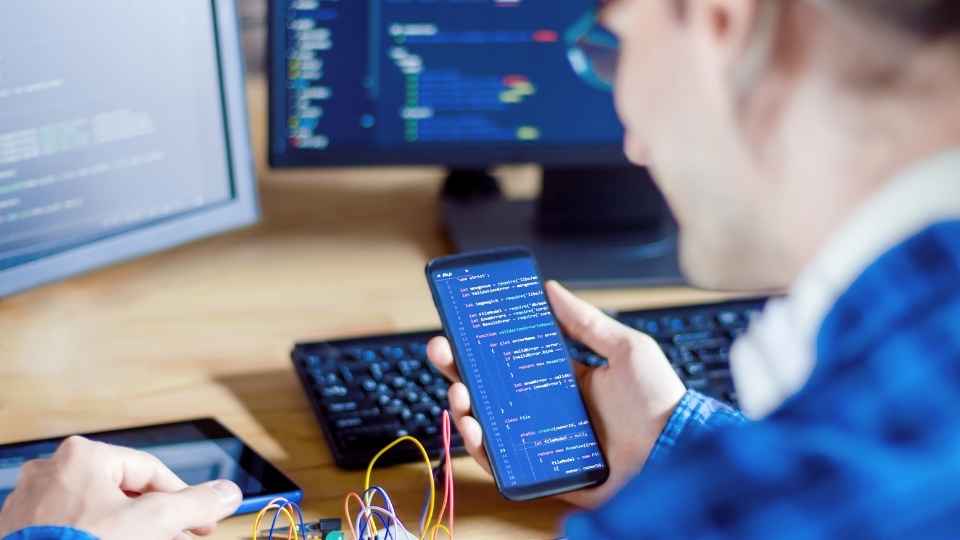
In the realm of electronics projects, having the right tools can make all the difference between success and frustration.
Among the essential tools in any electronics toolkit are the versatile multimeter and the indispensable soldering iron.
These two powerhouses have the ability to transform your projects, allowing you to measure various electrical parameters with precision and create reliable connections for seamless functionality.
In this article, we will delve into how these tools can unlock new possibilities and elevate your electronic endeavors to new heights.
Key Takeaways
- An electronics toolkit, including a multimeter and soldering iron, is essential for efficient troubleshooting and successful project completion.
- A multimeter is a versatile measurement tool that can be used to troubleshoot and verify electrical parameters. It has various functions and modes that allow for precise measurements and range selection.
- Proper use of a soldering iron, including techniques such as using a clean and properly tinned tip and controlling temperature based on component type, is crucial for achieving optimal soldering results.
- A breadboard is a useful tool for simplified prototyping and testing, allowing for easy assembly and connection of components without permanent connections. It provides the freedom to experiment and make changes without damaging components.
Having a well-equipped electronics toolkit is essential for any project involving electrical components, as it allows for efficient troubleshooting and the successful completion of projects.
An electronics toolkit typically consists of various tools and equipment that aid in the assembly, repair, and maintenance of electronic devices. These tools include screwdrivers, pliers, wire cutters, soldering irons, multimeters, and more.
Each tool serves a specific purpose and contributes to the overall efficiency and accuracy of the work. For example, a soldering iron is indispensable for joining electronic components together through soldering connections. It ensures reliable connections while minimizing heat damage to sensitive components.
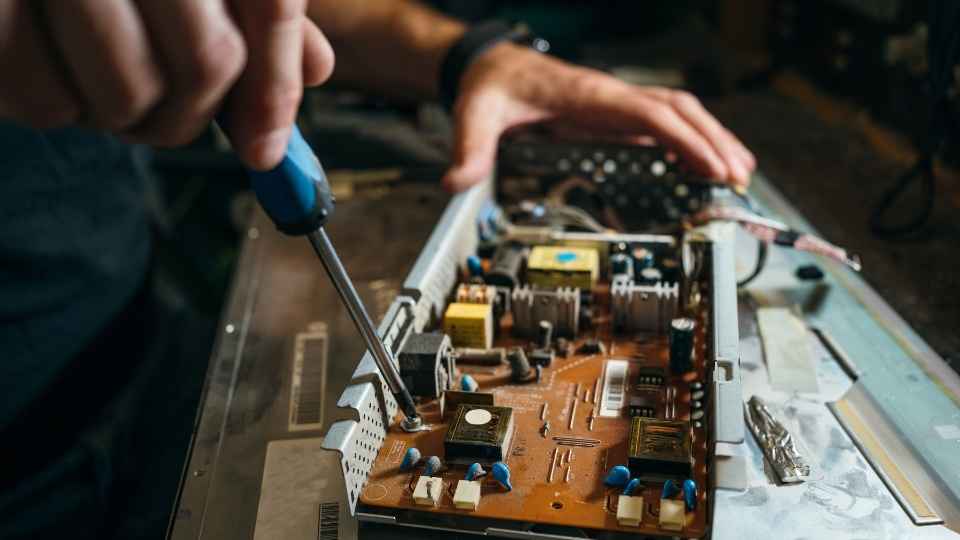
Understanding how each tool works and when to use them is crucial for achieving optimal results in electronics projects.
Now let's delve into understanding the multimeter: a versatile tool for measurements.
The understanding and proper utilization of a versatile measurement tool can greatly enhance the accuracy and precision of various technical tasks. One such tool is the multimeter, an essential component of any electronics toolkit.
A multimeter combines multiple functions into a single device, allowing users to measure voltage, current, resistance, and other electrical parameters. Its versatility lies in its ability to switch between different modes, such as DC or AC voltage measurements, diode testing, or continuity checks.
With its precise digital display and range selection options, the multimeter provides accurate readings for troubleshooting circuits, checking component values, or verifying power supply outputs.
Whether you are an electronics hobbyist or a professional engineer, understanding how to properly use a multimeter can empower you with the freedom to diagnose and solve electrical problems with confidence and efficiency.
Harnessing the Power of a Soldering Iron: Techniques and Tips
Utilizing effective techniques and expert tips, mastering the use of a soldering iron can greatly enhance the precision and quality of your electrical projects.
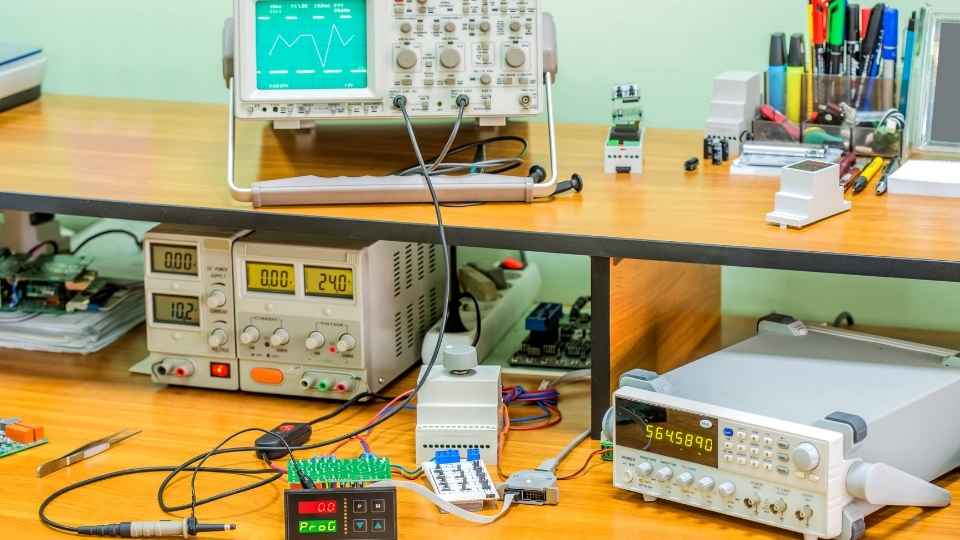
A soldering iron is an essential tool for joining components together to create reliable connections in electronic circuits.
To achieve optimal results, it is crucial to adhere to certain techniques. First and foremost, ensuring that the tip of the soldering iron is clean and properly tinned is essential for efficient heat transfer.
Additionally, controlling the temperature of the iron based on the type of component being soldered is vital to prevent damage. Properly heating both the component lead and pad evenly ensures a strong bond between them.
Finally, using high-quality solder with an appropriate flux content enhances conductivity while minimizing potential issues such as cold joints or solder bridges.
Mastering these techniques will empower you to tackle complex electrical projects with confidence and freedom.
Exploring the Breadboard: Prototyping and Testing Made Easy
Exploring the breadboard allows for simplified prototyping and efficient testing methods in the field of electronics. A breadboard, also known as a protoboard, is a reusable solderless device used to build and test electronic circuits. It consists of a plastic board with holes that are interconnected by metal clips or spring-loaded connectors. Components like resistors, capacitors, and integrated circuits can be easily inserted into the holes on the breadboard, allowing for quick and hassle-free circuit assembly. The interconnected holes allow for easy connection of components without the need for soldering, making it ideal for experimenting with different configurations and designs. Breadboards provide the freedom to iterate on ideas rapidly without committing to permanent connections. With its versatility and convenience, it serves as an essential tool in any electronics toolkit.
Transitioning into the subsequent section about 'the wire stripper: a must-have tool for neat and reliable connections', one important aspect of working with a breadboard is ensuring neat and reliable connections between components. This is where a wire stripper comes in handy...
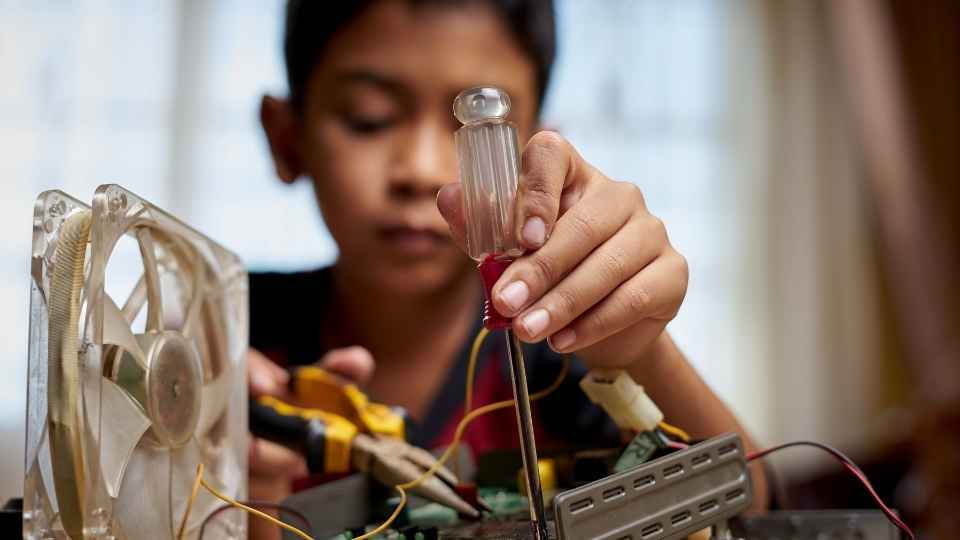
The wire stripper is an essential tool for achieving neat and reliable electrical connections.
With its precise cutting blades and adjustable stripping gauge, it enables efficient wire management by removing the insulation without damaging the conductor.
Efficient Wire Management
To ensure efficient wire management, it is important to implement organized routing and labeling techniques within your projects.
Proper wire management not only improves the overall appearance of your project but also enhances functionality and ease of maintenance.
One effective technique is to use cable ties or zip ties to secure wires together, keeping them neatly bundled and preventing tangling or interference with other components.
Additionally, routing wires along predefined paths can minimize the risk of accidental damage or short circuits.
Using wire labels or color coding can further aid in identifying specific wires and their respective functions, simplifying troubleshooting and future modifications.
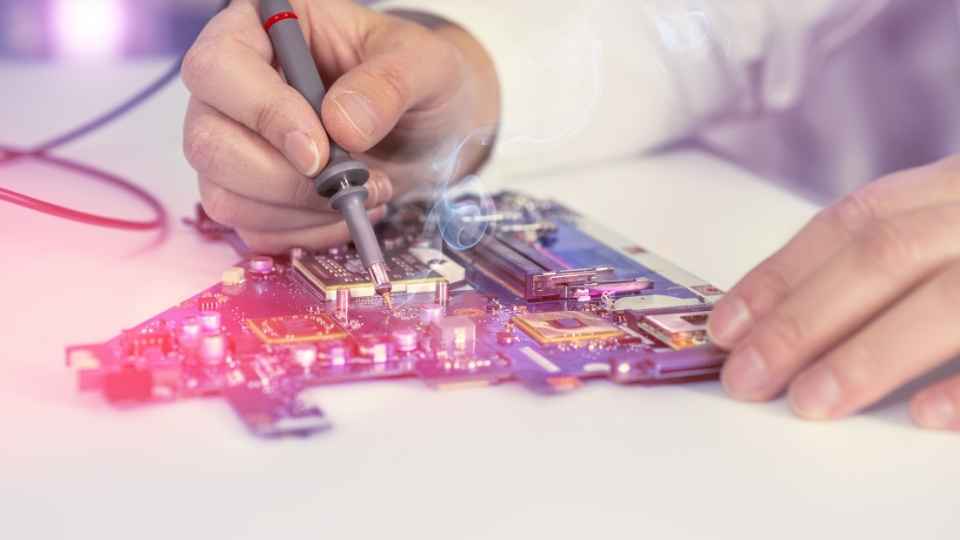
Reliable Electrical Connections
Reliable electrical connections are crucial for the proper functioning and longevity of any electronic system. Whether it's a simple circuit or a complex device, ensuring that all components are securely connected is essential. Loose or faulty connections can lead to intermittent operation, signal loss, and even permanent damage to the system.
To achieve reliable connections, professionals and enthusiasts rely on tools such as multimeters and soldering irons.
A multimeter allows precise measurement of voltage, current, and resistance in circuits. By using this tool, users can identify potential issues with their electrical connections, such as open circuits or short circuits. This enables them to make necessary adjustments before these problems escalate.
Soldering irons are used to create strong and durable electrical connections by melting solder onto the joint between two components. The molten solder solidifies quickly to form a secure bond that ensures consistent flow of electricity through the connection.
Unleashing the Potential of an Oscilloscope: Visualizing and Analyzing Signals
The oscilloscope is a powerful tool for visualizing and analyzing signals in electronic systems. With its ability to capture and display waveforms, it allows engineers and technicians to gain valuable insights into the behavior of electrical signals.
Signal Analysis Techniques
Signal analysis techniques provide valuable insights into the behavior and characteristics of electronic signals, enhancing the understanding and troubleshooting capabilities of engineers and technicians. These techniques involve analyzing various parameters of a signal, such as amplitude, frequency, phase, and noise levels. By applying mathematical algorithms and statistical methods to captured signal data, engineers can gain a deeper understanding of how a circuit is functioning or identify any abnormalities or faults.
Signal analysis also helps in identifying interference sources and optimizing system performance.
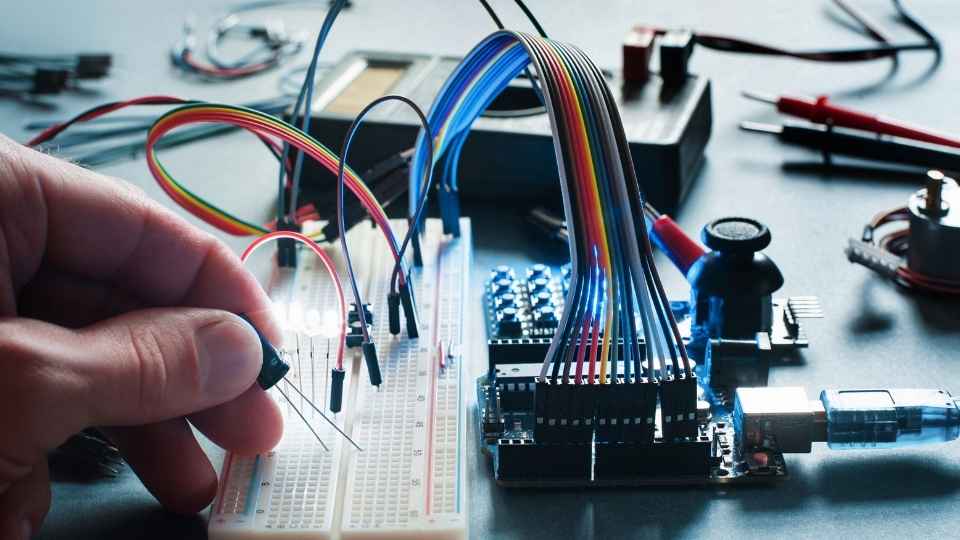
There are several tools available for signal analysis, including spectrum analyzers, network analyzers, and waveform analyzers. These instruments enable engineers to measure and analyze signals at different frequencies and time intervals with high precision and accuracy.
In addition to hardware-based tools, there are also software-based solutions that offer advanced signal analysis capabilities. Such software provides a range of functions like spectral analysis, filtering, modulation analysis, demodulation techniques, eye diagram generation, and more.
Overall, signal analysis techniques play a crucial role in ensuring the reliability and efficiency of electronic systems by providing valuable insights into the complex behavior of signals in various applications.
Waveform visualization is a crucial aspect of signal analysis as it enables engineers to visually assess the characteristics and behavior of signals in real-time. By representing signals as waveforms on a display, engineers can gain valuable insights into their amplitude, frequency, and phase. This visual representation allows for easy identification of anomalies or irregularities that may indicate issues with the signal or the underlying circuitry.
Furthermore, waveform visualization provides engineers with the ability to analyze transient events and dynamic behavior that cannot be easily captured through numerical data alone. It allows for detailed examination of signal quality, distortion, noise levels, and timing relationships between multiple signals.
By understanding how waveforms behave under different conditions, engineers can enhance troubleshooting capabilities by quickly identifying problems and making informed decisions regarding necessary adjustments or repairs.
This transition from waveform visualization sets the stage for discussing how multimeters and soldering irons can further transform projects by providing essential tools for measurement and circuit assembly, respectively.
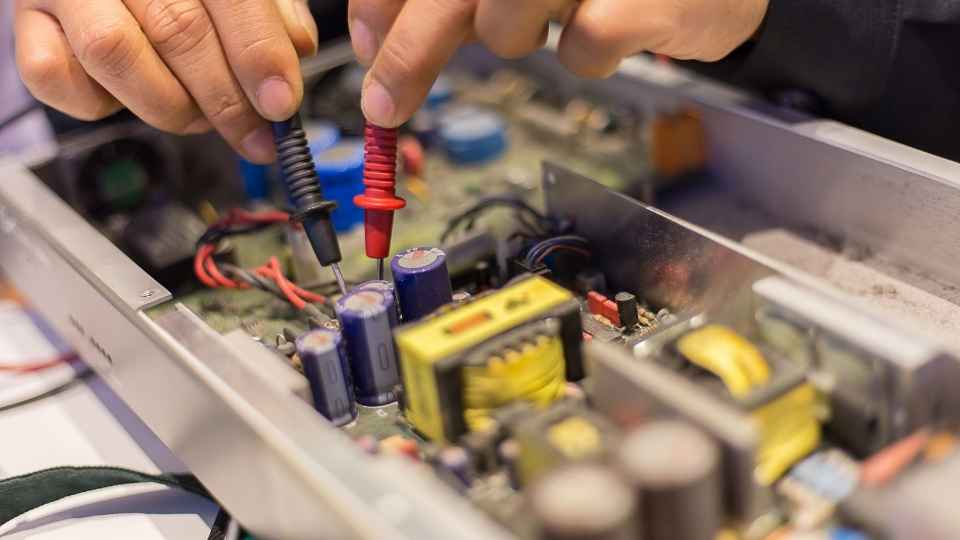
Enhancing Troubleshooting Capabilities
Enhancing troubleshooting capabilities involves acquiring a deep understanding of waveform behavior under various conditions. This requires the use of tools that can accurately measure and analyze waveforms, such as an oscilloscope. By observing waveforms, technicians gain valuable insights into the performance of electronic circuits and can identify any anomalies or issues.
In addition to waveform analysis, troubleshooting also involves using diagnostic tools like multimeters. A multimeter allows technicians to measure voltage, current, and resistance in a circuit, providing crucial information about its functioning. With these measurements, technicians can pinpoint faulty components or connections and take appropriate corrective actions.
By combining the power of waveform visualization with precise measurement capabilities offered by tools like oscilloscopes and multimeters, troubleshooting becomes more efficient and effective. These tools empower individuals to diagnose complex issues quickly and accurately, leading to faster resolution of problems in electronics projects.
Transitioning into the subsequent section about 'enhancing your projects with essential electronics toolkit accessories,' these troubleshooting capabilities form the foundation for successful project execution.
By incorporating essential electronics toolkit accessories, such as a multimeter and soldering iron, you can significantly improve the quality and functionality of your projects.
A multimeter is a versatile tool that allows you to measure various electrical quantities accurately. With its ability to measure voltage, current, resistance, and continuity, you can troubleshoot circuit issues effectively. This ensures that your projects are free from faulty connections or components that could hinder their performance.
A soldering iron is another indispensable tool for any electronics enthusiast. It enables you to join electronic components together by melting solder onto them. This process creates secure and reliable connections, ensuring the longevity of your projects.

Combining the capabilities of a multimeter and soldering iron grants you the freedom to explore complex electronic designs with confidence. You can test circuits for functionality and reliability while also enabling customization through precise component placement and connection.
These essential toolkit accessories empower both beginners and experienced individuals in creating innovative solutions with optimal performance.
Frequently Asked Questions
How Do I Choose the Right Multimeter for My Electronics Projects?
When selecting a multimeter for electronics projects, consider factors such as accuracy, range of measurements, functionality (e.g., voltage, current, resistance), durability, and ease of use. Additionally, ensure compatibility with your project requirements and budget constraints.
Are There Any Safety Precautions I Should Take When Using a Soldering Iron?
When using a soldering iron, it is crucial to prioritize safety. Ensure a well-ventilated workspace, wear protective gear, and be cautious of burns. Additionally, always unplug and properly store the iron when not in use to prevent accidents.
Can a Breadboard Be Used for More Complex Circuits or Is It Primarily for Prototyping?
A breadboard can be used for more complex circuits as well as prototyping, provided that the circuit complexity does not exceed the limitations of the board's design. It offers flexibility and ease of use in designing and testing electronic circuits.
What Are the Advantages of Using a Wire Stripper Over Other Methods of Removing Insulation From Wires?
Using a wire stripper offers several advantages over alternative methods of removing insulation from wires. It provides precise and consistent results, saving time and reducing the risk of damaging the wire. Additionally, it allows for efficient and effortless stripping, enhancing productivity in electrical projects.
Alternative tools for visualizing and analyzing signals without an oscilloscope include logic analyzers, waveform generators, spectrum analyzers, and signal analyzers. These tools provide different functionalities and can be used depending on specific requirements and budgets.

 Basic Electronics ConceptsEssential ToolsCircuit Design BasicsMicrocontrollersDIY Electronics ProjectsRoboticsPrivacy PolicyTerms And Conditions
Basic Electronics ConceptsEssential ToolsCircuit Design BasicsMicrocontrollersDIY Electronics ProjectsRoboticsPrivacy PolicyTerms And Conditions
